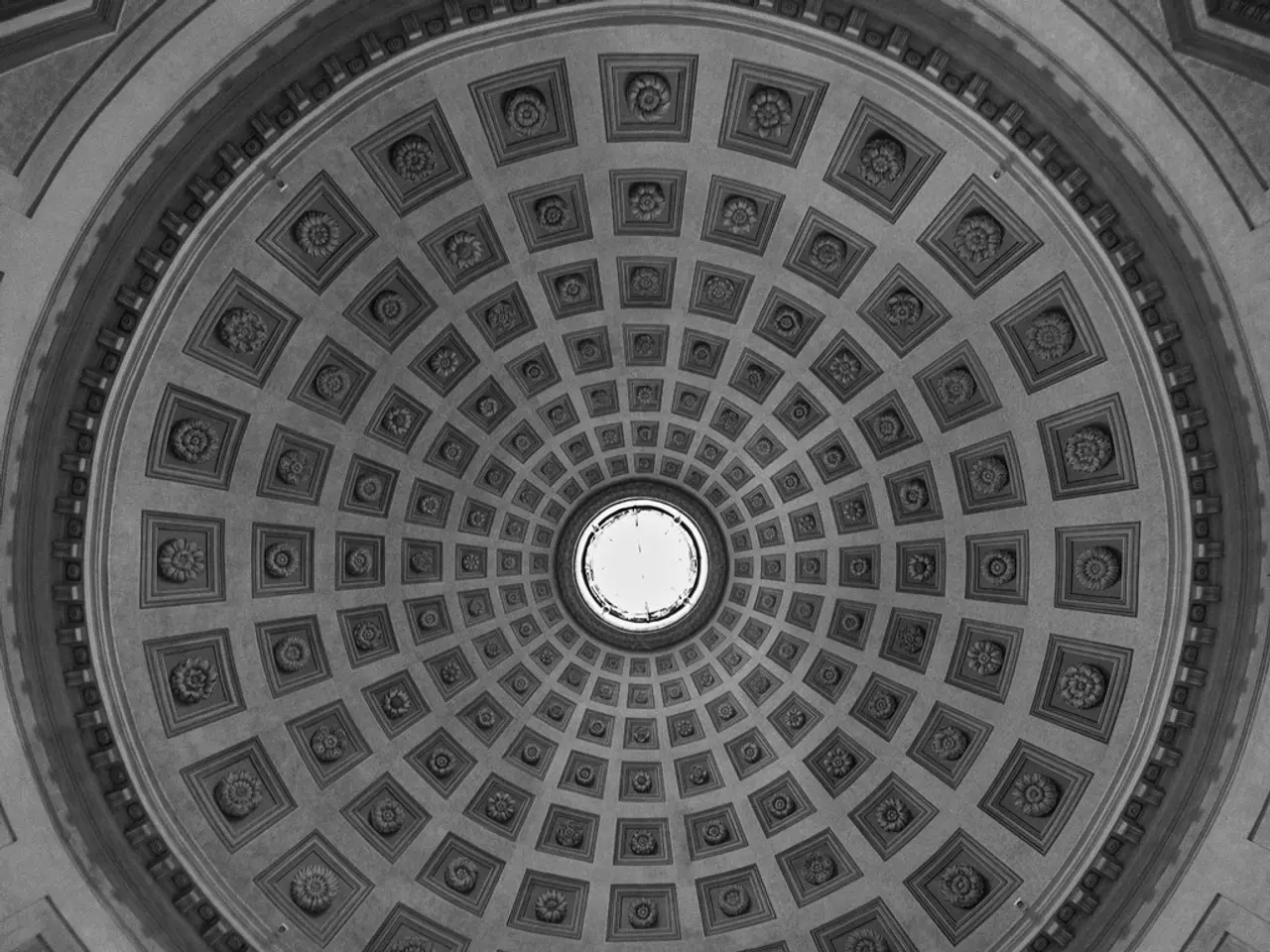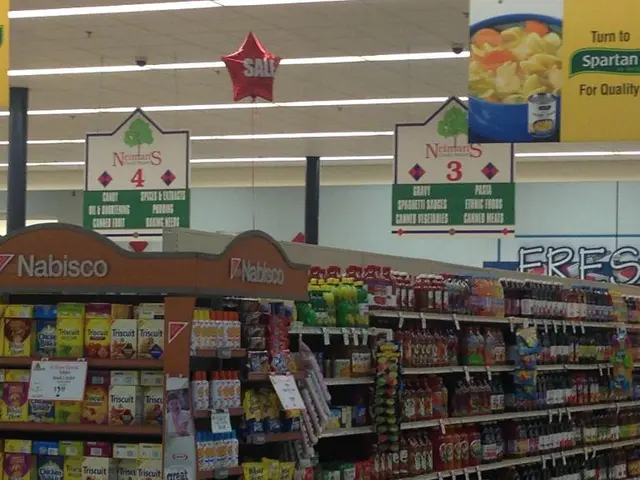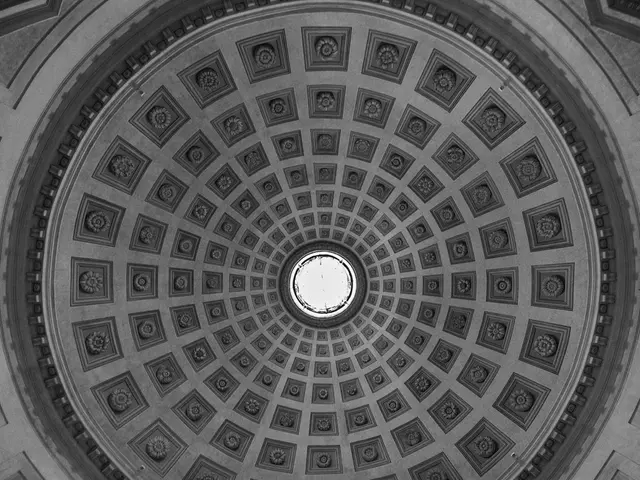Advantages of Vegetated Rooftops for Climate-Adaptive Permanent Agriculture
In the pursuit of building greener and more livable cities, green roofs have emerged as a significant solution for urban sustainability. These vegetated rooftops offer a multitude of benefits, from enhancing biodiversity to improving air quality and managing water resources.
Green roofs are particularly beneficial in desert cities, where they can be planted with soil depths of 4-6 inches and require minimal watering. However, their implementation comes with challenges, such as the need for good drainage and waterproofing to prevent leaks. To make the most of green roofs, more research and collaboration are required, along with education and policy support.
The ecological benefits of green roofs are numerous. They serve as vital habitats for urban wildlife, creating corridors for species like birds, bees, butterflies, and other insects. By increasing the presence and diversity of native flora and fauna, green roofs help restore ecological cycles disrupted by urbanization.
In terms of urban sustainability, green roofs offer significant advantages. They absorb and retain rainwater, reducing urban runoff volume and mitigating flood risk. This stormwater management helps improve water quality by filtering pollutants. Green roofs also help cool cities during heatwaves by shading buildings and reducing the urban heat island effect.
Moreover, green roofs contribute to air quality improvement by capturing airborne particulates and producing oxygen. They insulate buildings, reducing heating and cooling energy demands, and thus lowering greenhouse gas emissions associated with urban energy use.
Beyond ecological effects, green roofs provide aesthetic and psychological benefits to urban residents, offering green spaces for relaxation and contact with nature. This indirectly supports biodiversity conservation by fostering appreciation and stewardship.
Cities like Basel demonstrate the potential of green roofs to create biodiverse, meadow-like habitats focused on native plants, thus maximizing ecological benefits alongside climate resilience and urban livability. However, integrating green roofs with other rooftop uses, such as solar panels, poses a challenge in optimizing multiple urban sustainability goals.
As green roofs gain popularity for their benefits, including protecting buildings, saving energy, helping manage urban ecosystems, and improving climate resilience, it's crucial to remember the importance of proper maintenance. Regular checks, watering, and fertilizing are necessary for green roofs to stay beneficial and sustainable over time.
In conclusion, green roofs serve as multifunctional nature-based solutions that enhance urban biodiversity conservation and provide wide-ranging ecological benefits essential for sustainable cities. However, to fully realize their potential, efforts must be made to educate builders, architects, and government officials about their benefits and implementation. With the right support and collaboration, green roofs can play a key role in making cities more sustainable, growing food, managing water, and handling climate changes.
[1] Green roofs in sustainable urban development: A review of ecological benefits and challenges. (2018). Sustainability, 10(1), 1-29. [2] Green roofs: A review of their environmental impacts and benefits. (2018). Journal of Cleaner Production, 183, 117-131. [3] Green roofs for cities: Benefits, barriers, and opportunities. (2018). Landscape and Urban Planning, 170, 138-148. [4] Green roofs and urban drainage: A review of the literature. (2017). Journal of Environmental Management, 202, 246-260. [5] Green roofs for biodiversity conservation in cities: A case study of Basel, Switzerland. (2016). Urban Forestry & Urban Greening, 19, 10-18.
- Green roofs, native plants, and biodiversity are integrally linked in urban sustainability, as green roofs provide vital habitats for a variety of wildlife and help restore ecological cycles disrupted by urbanization.
- By absorbing and retaining rainwater, green roofs contribute to water management in cities, reducing urban runoff volume and mitigating flood risk, while also improving water quality by filtering pollutants.
- Gardening with a focus on sustainability, home-and-garden enthusiasts can incorporate green roofs into their lifestyle, promoting climate resilience, ecological benefits, and urban livability.
- Science plays a significant role in understanding the environmental impacts and benefits of green roofs, as research continues to investigate their potential for biodiversity conservation, stormwater management, air quality improvement, and energy savings.
- In collaboration with environmental-science professionals, communities can implement the use of green roofs to enhance biodiversity, improve climate resilience, and promote sustainable living, while managing water resources and reducing the urban heat island effect.
- The implementation of green roofs with other rooftop uses, such as solar panels, can present challenges for long-term success in optimizing multiple urban sustainability goals, requiring more research and collaboration.
- Regular maintenance, including watering, fertilizing, and checks for proper drainage and waterproofing, is essential for ensuring that green roofs remain beneficial and sustainable over time, contributing to the overall health and well-being of cities and their residents.




